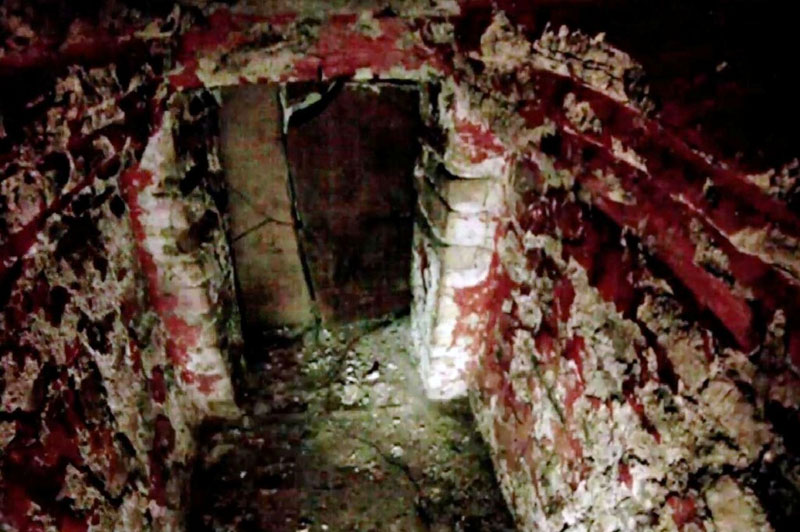Micro-camera Provides First Peek Inside Mayan Tomb

A Mayan tomb closed to the world for 1,500 years has finally revealed some of its secrets as scientists snaked a tiny camera into a red-and-black painted burial chamber.
The room, decorated with paintings of nine figures, also contains pottery, jade pieces and shell, archaeologists from Mexico's National Institute of Anthropology and History (INAH) reported Thursday (June 23).
The tomb is located in Palenque, an expansive set of stone ruins in the Mexican state of Chiapas. According to the INAH, the tomb was discovered in 1999 under a building called Temple XX. But the stonework and location prevented exploration. [See the images taken in the tomb]
By threading a tiny video camera through a 6-inch by 6-inch (15 cm by 15 cm) hole above the tomb, researchers were able to glimpse for the first time the contents of the burial chamber. The room contains a sarcophagus and pottery dishes, which may have once held funerary offerings. The contents of the chamber suggest that the tomb is the resting place of a dignitary who ruled in Palenque sometime between A.D. 431 and A.D. 550.
Exploration of another Palenque tomb from the same time period suggests that the area was a royal necropolis, INAH archaeologists said. Later, Temple XX was built over the site, covering the vaulted chamber tomb with a step pyramid structure.
You can follow LiveScience senior writer Stephanie Pappas on Twitter @sipappas. Follow LiveScience for the latest in science news and discoveries on Twitter @livescience and on Facebook.
Get the world’s most fascinating discoveries delivered straight to your inbox.

Stephanie Pappas is a contributing writer for Live Science, covering topics ranging from geoscience to archaeology to the human brain and behavior. She was previously a senior writer for Live Science but is now a freelancer based in Denver, Colorado, and regularly contributes to Scientific American and The Monitor, the monthly magazine of the American Psychological Association. Stephanie received a bachelor's degree in psychology from the University of South Carolina and a graduate certificate in science communication from the University of California, Santa Cruz.
